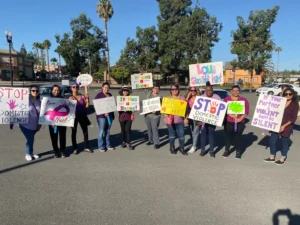Alcohol use disorder (AUD) is a medical condition characterized by an impaired ability to stop or control alcohol use despite adverse social, occupational, or health consequences. It encompasses a range of behaviors from mild to severe and affects millions of Americans, cutting across all demographics. Understanding AUD and its impact is crucial, especially when examining its relationship with domestic violence — a pervasive issue that devastates families and communities.
What Is Alcohol Use Disorder?
AUD is more than just heavy drinking; it’s a chronic brain disorder. Symptoms of AUD include a strong craving for alcohol, inability to control drinking, withdrawal symptoms when not drinking, and a tolerance to alcohol that leads to increased consumption. The diagnosis of AUD is based on the individual’s drinking pattern and its impact on their life and health.
Alcohol Use Disorder: Statistics
In the US, AUD is alarmingly common. According to the National Institute on Alcohol Abuse and Alcoholism (NIAAA), 29.5 million people ages 12 and older had AUD in 2022. Here in California, our communities struggle with alcohol abuse in ways that mirror national trends, with millions affected directly or indirectly by the disorder. The National Center for Drug Abuse Statistics reports that “an average of 15,443 annual deaths in California are attributable to excessive alcohol use.”
Effects of Alcohol Use Disorder
The effects of AUD are far-reaching and can include health problems such as liver disease, heart disease, and increased risk of certain cancers. It also has significant social and economic impacts, leading to job loss, financial difficulties, and strained relationships. Additionally, AUD can exacerbate mental health issues like depression and anxiety, creating a vicious cycle of alcohol use and psychological distress.
Trastorno por consumo de alcohol y violencia doméstica
The link between AUD and domestic violence is well-documented but complex. While alcohol does not cause domestic violence, it can escalate the frequency and severity of violence. Alcohol impairs judgment, lowers inhibitions, and increases aggression, which can lead to situations where domestic violence is more likely to occur. A 2021 estudiar on alcohol, aggression, and violence found that “the inherent dopaminergic and serotonergic anomalies seen in aggressive individuals increase their susceptibility to commit violent crimes when alcohol [is] present in their system.”
What adds to the complexity of the relationship between AUD and domestic violence is the fact that this connection is bidirectional. Experiencing domestic violence can lead to increased alcohol consumption as a coping mechanism, further entrenching the cycle of violence and substance abuse. This cycle creates a challenging environment for victims, making it harder to leave abusive situations and seek help.
Breaking the Cycle of AUD and Domestic Violence
Breaking the cycle of AUD and domestic violence requires a multifaceted approach. Here are some ways to support individuals experiencing AUD and prevent domestic violence:
-
Education and awareness: Increasing awareness about AUD and its effects on individuals and families is crucial. Education can help destigmatize seeking help for alcohol dependency and domestic violence.
-
Access to treatment: Providing accessible, affordable treatment options for AUD is essential. This includes inpatient and outpatient programs, counseling, and support groups.
-
Support systems: Strengthening support systems for those affected by AUD and domestic violence can make a significant difference. Community resources, hotlines, and shelters play vital roles in offering safe havens and assistance. Here at Crisis House, we have transitional housing and rapid re-housing for women and their children fleeing domestic violence situations. Survivors learn how to form non-violent family units, identify red flags in toxic relationships, provide emotional support to other survivors, rebuild self-esteem, and set healthy boundaries. Women transition to being independent and self-sufficient by increasing income and securing permanent housing when they graduate from the program.
-
Preventive measures: Programs that address the root causes of AUD and domestic violence — such as poverty, stress, and lack of education — are crucial. Preventive measures also include promoting relaciones sanas and coping strategies.
Crisis House: Supporting Victims of Domestic Violence
For those facing the dual challenges of AUD and domestic violence, finding comprehensive support is critical. Crisis House offers specialized domestic violence services designed to provide safety, support, and resources to victims and their families. Our programs include emergency shelter, legal advocacy, counseling, and support groups, all aimed at empowering victims to break free from the cycle of abuse and rebuild their lives.
If you or someone you know is experiencing domestic violence, reach out to Crisis House for help. Our compassionate team is dedicated to providing confidential support and guidance, ensuring that every individual has the opportunity to live a life free from violence and fear.
En Crisis House, we are here during these stressful times to support individuals and families with our services and resources. We’re leaders in critical services in East County, San Diego, providing crisis intervention, transitional and permanent housing, and services for families and children fleeing domestic violence.
Ayúdenos a llegar a los necesitados by donating or volunteering today! You can also sign up for our newsletter to stay in the loop as we work to connect families, children, and individuals to crucial resources. Together, we can empower people to renew their lives!







